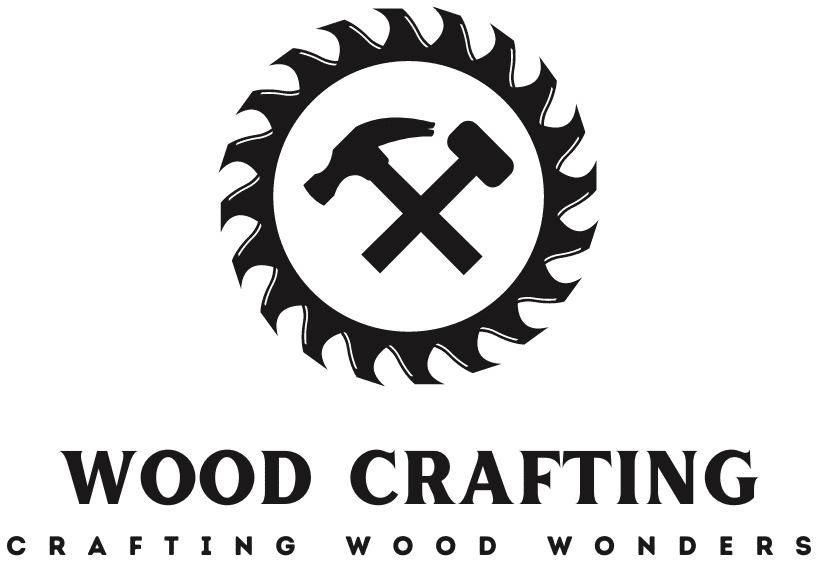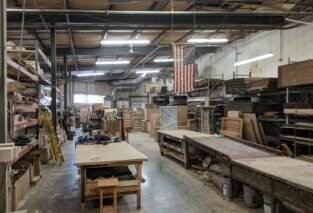In this article, you will learn all about the various techniques used in cabinetmaking. We will cover everything from basic joinery methods to advanced finishing techniques. Whether you’re a beginner looking to start your first cabinet project or an experienced woodworker seeking to improve your skills, this guide has got you covered. By the end of this article, you will have a solid understanding of the key techniques needed to create beautiful and functional cabinets. Let’s get started!
Chapter 1: Introduction to Cabinetmaking
Understanding the Basics of Cabinetmaking
Cabinetmaking is a skilled trade that involves the construction of cabinets and other wooden furniture pieces. Whether you are a beginner or an experienced woodworker, it is essential to understand the basics of cabinetmaking before diving into complex projects. This chapter will provide you with a comprehensive overview of the fundamental principles and techniques involved in cabinetmaking.
The History of Cabinetmaking
Cabinetmaking has a rich history that dates back centuries. Throughout the years, cabinetmakers have honed their skills and developed various techniques that have stood the test of time. Understanding the history of cabinetmaking not only allows you to appreciate the craft but also provides insights into the evolution of design and construction methods.
The Importance of Cabinetmaking Skills
Cabinetmaking is a highly sought-after skill that requires precision, attention to detail, and a deep understanding of wood and joinery techniques. Mastering cabinetmaking skills opens up countless opportunities for creative expression and allows you to create functional and aesthetically pleasing pieces of furniture. Whether you are a professional woodworker or a DIY enthusiast, knowing the essential cabinetmaking skills will elevate your craftsmanship to the next level.
Chapter 2: Essential Tools for Cabinetmaking
Must-Have Hand Tools for Cabinetmaking
Hand tools are the backbone of any cabinetmaker’s workshop. These tools allow you to shape, cut, and join wood with precision and accuracy. Some of the must-have hand tools for cabinetmaking include chisels, hand planes, hand saws, and layout tools. Understanding the purpose and proper usage of each tool is crucial in achieving professional results.
Power Tools for Efficient Cabinetmaking
While hand tools are essential, power tools can significantly speed up your cabinetmaking process. With the advent of modern technology, power tools like table saws, routers, and drills have become invaluable assets in any cabinetmaker’s workshop. These tools allow you to work efficiently and effectively, saving you time and effort.
Choosing the Right Measurement and Marking Tools
Accurate measurements and precise markings are critical in cabinetmaking. Being meticulous with your measurements ensures that your cabinets fit perfectly and function as intended. In this section, we will discuss the various measurement and marking tools available and provide tips on how to choose the right tools for your projects.
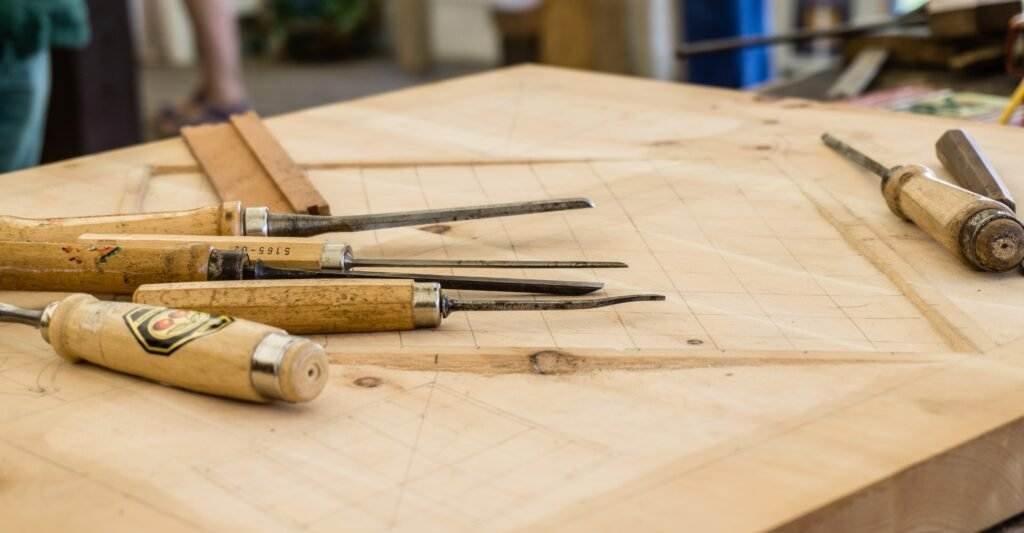
Chapter 3: Selecting and Preparing Wood for Cabinetmaking
Different Types of Wood for Cabinetmaking
Wood selection plays a significant role in the final appearance and durability of your cabinets. There are various types of wood available, each with its own unique characteristics and suitability for different cabinet styles. Understanding the advantages and disadvantages of different wood species will help you make informed decisions when selecting wood for your projects.
Identifying and Dealing with Wood Defects
Wood defects are inevitable, but knowing how to identify and deal with them is crucial in maintaining the quality of your cabinets. In this section, we will discuss common wood defects such as knots, warping, and splits, and provide tips on how to address them to ensure the structural integrity and visual appeal of your cabinets.
Proper Wood Preparation Techniques
Properly preparing your wood before starting any cabinetmaking project is essential. This includes tasks such as cutting, planing, sanding, and applying wood finishes. Each step requires careful attention to detail to achieve a smooth and professional finish. This section will walk you through the necessary wood preparation techniques to ensure the best possible results.
Chapter 4: Joinery Techniques for Cabinetmaking
Dovetail Joinery: Strength and Aesthetics
Dovetail joinery is a classic technique that provides both strength and visual appeal to your cabinets. This method involves interlocking wedge-shaped joints, creating a sturdy bond that can withstand years of use. In this section, we will discuss the different types of dovetail joints and provide step-by-step instructions on how to execute this technique flawlessly.
Mortise and Tenon Joints for Durability
Mortise and tenon joints are renowned for their strength and durability. This technique involves fitting a protruding tenon into a corresponding mortise. Whether you are constructing cabinet frames or attaching cabinet doors, mastering the art of mortise and tenon joinery is crucial in creating sturdy and long-lasting cabinets.
Pocket Hole Joinery for Quick Assembly
Pocket hole joinery is a versatile technique that allows for quick and efficient cabinet assembly. This method involves drilling angled holes and joining pieces using specialized screws. Pocket hole joinery is ideal for beginners or those looking for a time-saving method without compromising on strength. In this section, we will guide you through the process of using pocket hole joinery in cabinetmaking.
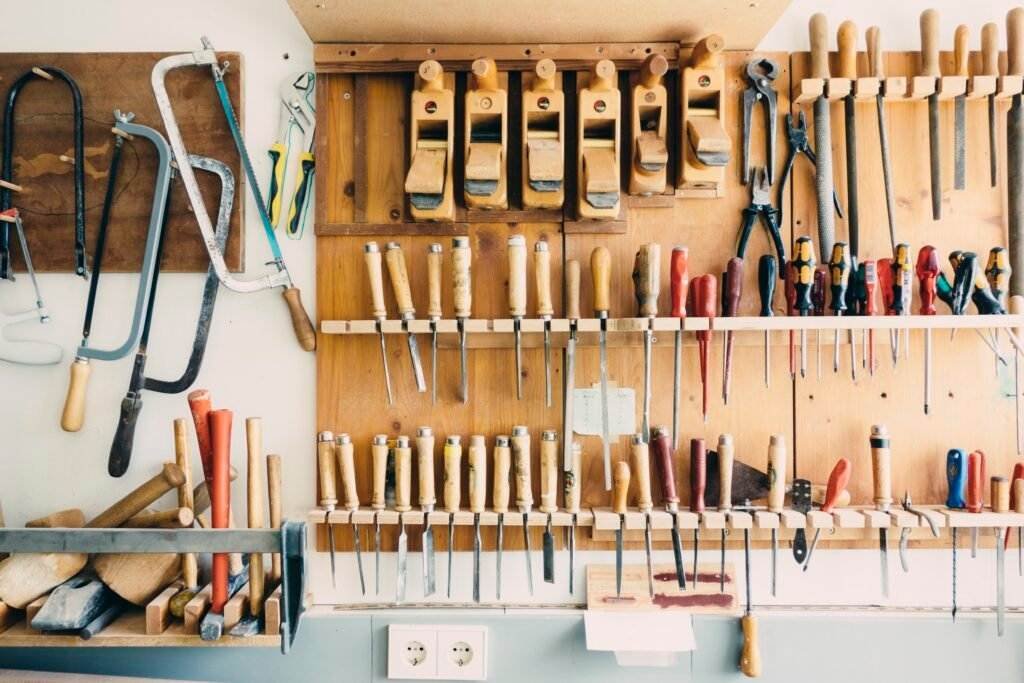
Chapter 5: Cabinet Design and Layout
Understanding Ergonomics and Functional Design
A well-designed cabinet not only looks visually appealing but also serves its intended purpose seamlessly. Understanding the principles of ergonomics and functional design is crucial in creating cabinets that are both aesthetically pleasing and highly functional. In this section, we will explore the importance of ergonomics in cabinetmaking and provide tips on how to design cabinets that maximize usability.
Creating Accurate Cabinet Measurements
Accurate measurements are essential in cabinetmaking to ensure proper fit and functionality. This section will provide an in-depth guide on measuring cabinets, including tips on measuring techniques, allowances for hinges and hardware, and accounting for wood movement. By mastering accurate measurements, you can avoid costly mistakes and create cabinets that fit perfectly into any space.
Optimal Layout Planning and Assembly
Efficient layout planning and assembly play a crucial role in minimizing waste, maximizing productivity, and achieving professional-looking cabinets. This section will guide you through the process of optimizing your cabinet layout, including considerations on grain direction, stock usage, and assembly order. By planning your layout carefully, you can streamline your cabinetmaking process and enhance the overall efficiency of your workshop.
Chapter 6: Finishing and Refinishing Cabinets
Choosing the Right Finish for Different Wood Types
Choosing the right finish for your cabinets is essential for enhancing their appearance and protecting them from wear and tear. Different wood types require different finishes to bring out their natural beauty. In this section, we will discuss popular finishes such as varnish, oil, and lacquer, and provide tips on how to choose the right finish for your specific wood species.
Surface Preparation for a Smooth Finish
Proper surface preparation is the key to achieving a smooth and flawless finish on your cabinets. This section will cover essential steps such as sanding, filling imperfections, and applying sealers or primers. By following proper surface preparation techniques, you can ensure that your cabinets have a professional-looking finish that lasts.
Refinishing Techniques for Cabinet Restoration
Over time, cabinets may require refinishing to restore their beauty and longevity. Whether you are refinishing old cabinets or simply refreshing the look of existing ones, this section will guide you through the process. We will cover topics such as stripping old finishes, repairing damaged wood, and applying new finishes to bring your cabinets back to life.
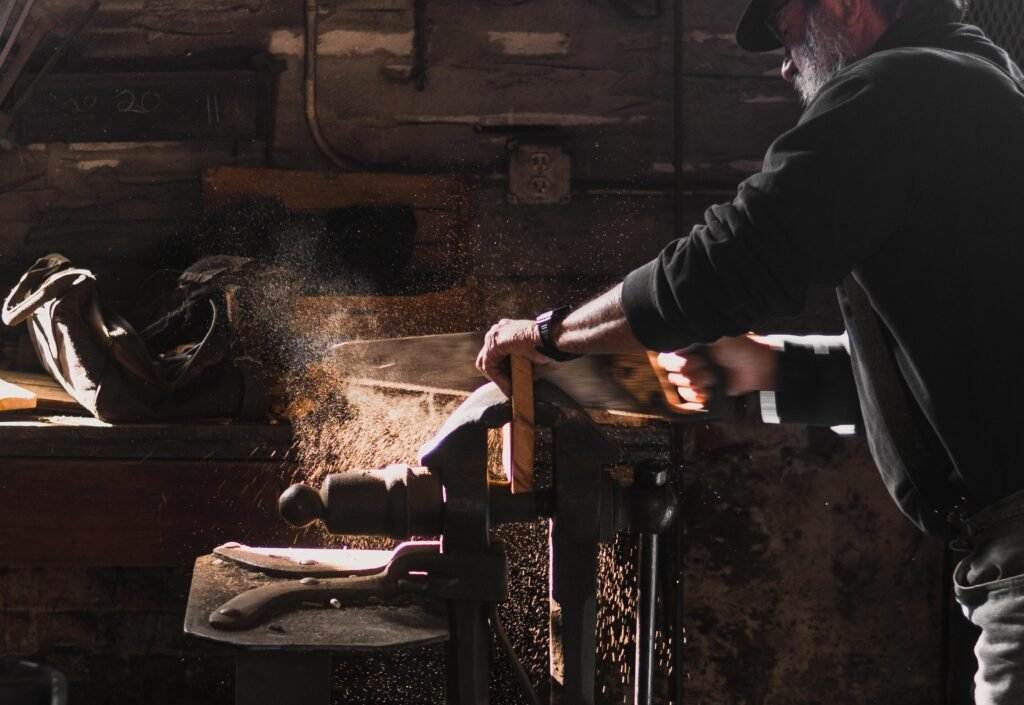
Chapter 7: Installing Cabinet Hardware
Selecting and Sourcing Cabinet Hardware
Cabinet hardware is the finishing touch that brings both functionality and aesthetic appeal to your cabinets. This section will provide advice on selecting the right hardware, such as hinges, knobs, and pulls, for different cabinet styles. We will also discuss sourcing options and tips on finding high-quality hardware that suits your budget.
Proper Placement and Installation Techniques
Installing cabinet hardware requires precision and attention to detail to achieve a polished look. This section will guide you through the process of properly placing and installing hardware, including tips on alignment, spacing, and avoiding common installation mistakes. By following these techniques, you can ensure that your cabinets look professional and function flawlessly.
Troubleshooting Common Hardware Issues
Sometimes, even with the best installation techniques, hardware issues may arise. This section will address common problems such as loose hinges, misaligned drawers, and sticky mechanisms. We will provide troubleshooting tips and step-by-step instructions on how to resolve these issues effectively, ensuring that your cabinets remain in top-notch condition.
Chapter 8: Customization and Advanced Techniques
Incorporating Decorative Inlays and Veneers
Adding decorative inlays and veneers to your cabinets can elevate their visual appeal and create unique design elements. This section will explore various inlay techniques, including stringing, marquetry, and parquetry, and provide tips on choosing the right veneers for different applications. By incorporating these techniques, you can create cabinets that are truly one-of-a-kind.
Creating Custom Cabinet Doors and Panels
Custom cabinet doors and panels allow you to infuse your personal style into your cabinets. This section will cover different door and panel styles, including raised panel, flat panel, and glass panel doors. We will discuss construction techniques, hardware considerations, and design tips to help you create custom doors and panels that reflect your unique taste.
Advanced Joinery Techniques for Unique Designs
For those seeking to push the boundaries of traditional cabinetmaking, advanced joinery techniques offer limitless possibilities. This section will explore techniques such as finger joints, box joints, and spline joints, which can be used to create intricate designs and unique furniture pieces. By mastering advanced joinery techniques, you can take your cabinetmaking skills to new heights.
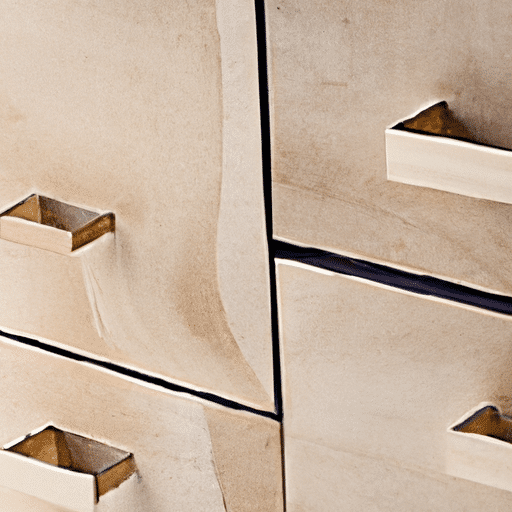
Chapter 9: Cabinetmaking Tips and Tricks
Time-Saving Tips for Efficient Cabinetmaking
Efficiency is key in cabinetmaking, and time-saving tips can significantly enhance your productivity in the workshop. This section will provide practical advice on streamlining your workflow, organizing your tools and materials, and utilizing jigs and templates to save time. By implementing these tips, you can spend less time on mundane tasks and more time creating stunning cabinets.
Expert Advice on Problem-Solving
Cabinetmaking is not without its challenges, and knowing how to overcome obstacles is crucial in producing high-quality cabinets. This section will provide expert advice on common problems and solutions, such as dealing with wood movement, fixing joinery mistakes, and troubleshooting finishing issues. By learning from experienced cabinetmakers, you can tackle any problem that comes your way with confidence.
Avoiding Common Mistakes in Cabinetmaking
Nobody is immune to making mistakes, but learning from others’ experiences can help you avoid common pitfalls. This section will highlight common mistakes in cabinetmaking, such as inaccurate measurements, improper joinery techniques, and finishing mishaps. By familiarizing yourself with these mistakes, you can take proactive measures to avoid them and produce cabinets of exceptional quality.
Chapter 10: Conclusion
Summary of Cabinetmaking Techniques
In this comprehensive guide, we have explored various cabinetmaking techniques, from understanding the basics to mastering advanced joinery. By following the principles and tips outlined in each chapter, you can embark on your cabinetmaking journey with confidence and achieve professional results.
Inspiration for Future Projects
Cabinetmaking is a never-ending learning process, and there is always room for creativity and innovation. This guide should serve as a starting point, inspiring you to explore new designs, techniques, and materials. By continuously seeking inspiration and pushing your creative boundaries, you can create truly remarkable cabinets that reflect your unique style.
Continuing Education in Cabinetmaking
Cabinetmaking is a lifelong pursuit that offers endless possibilities for growth and development. If you are passionate about honing your skills further, consider pursuing continuing education opportunities such as workshops, seminars, or online courses. By investing in your education, you can stay at the forefront of cabinetmaking trends and techniques, ensuring your craftsmanship remains exceptional.
In conclusion, cabinetmaking is a rewarding craft that requires a combination of skill, knowledge, and creativity. With this comprehensive guide as your companion, you are equipped with the fundamental principles and techniques to embark on your cabinetmaking journey. Remember, practice makes perfect, so don’t be afraid to dive in, make mistakes, and learn from them. In no time, you will be creating beautiful, functional, and enduring cabinets that will be cherished for generations to come. Happy cabinetmaking!
